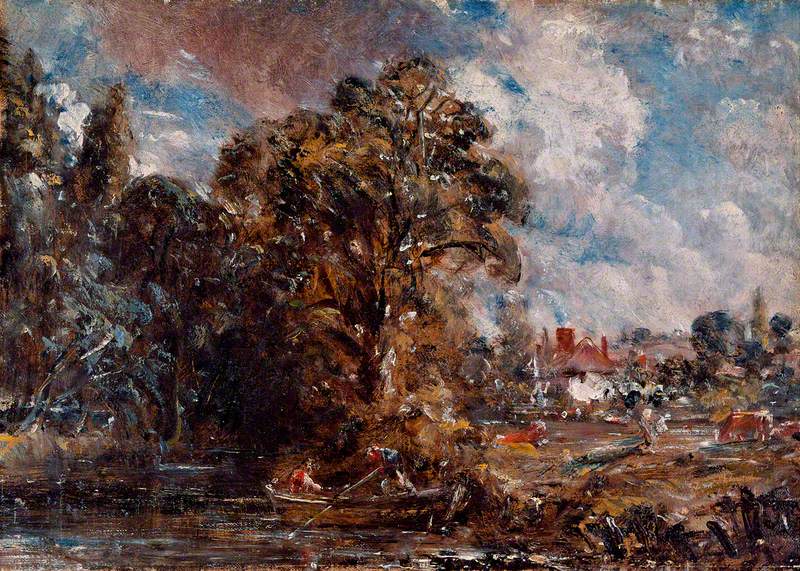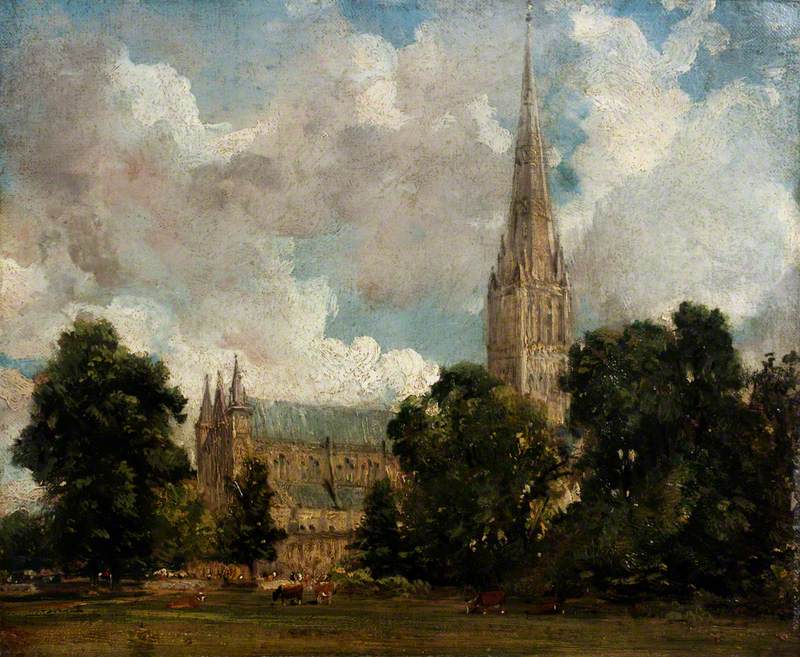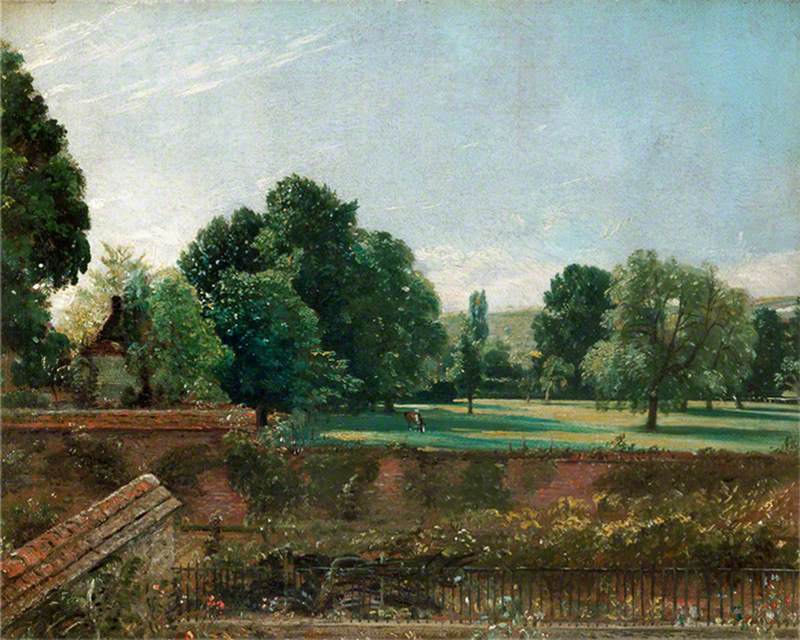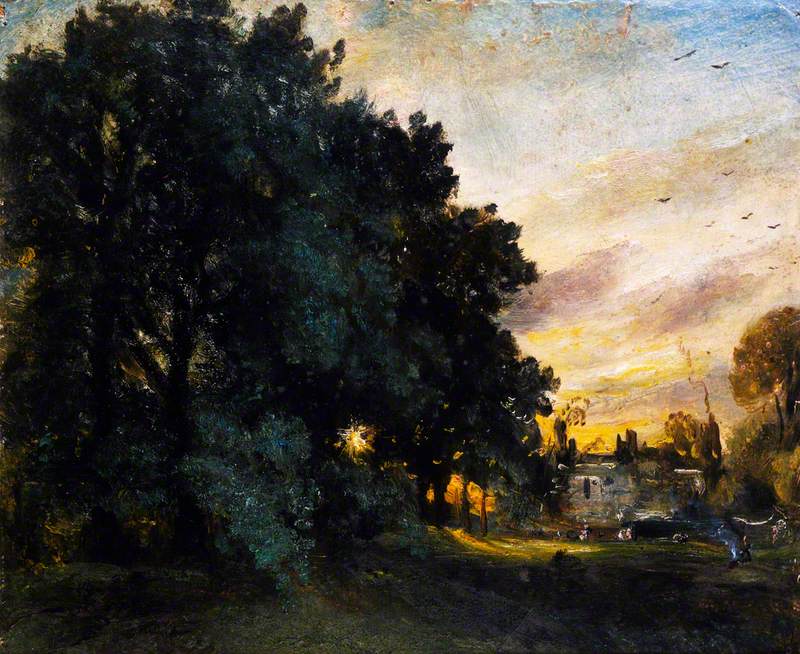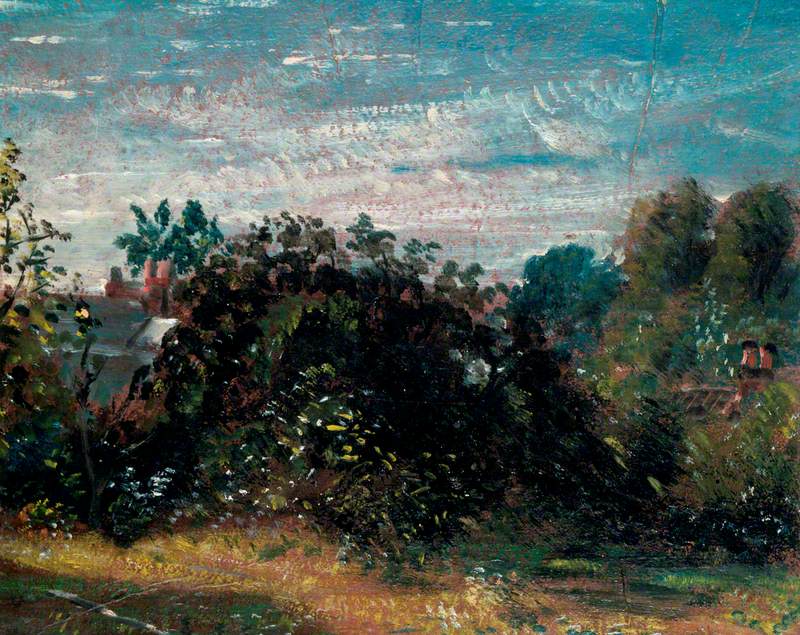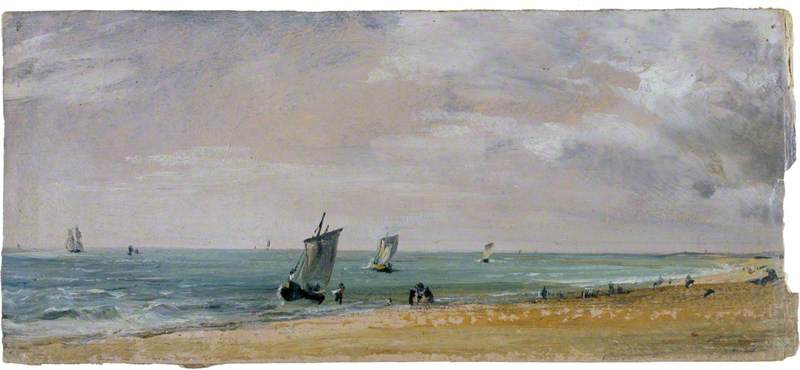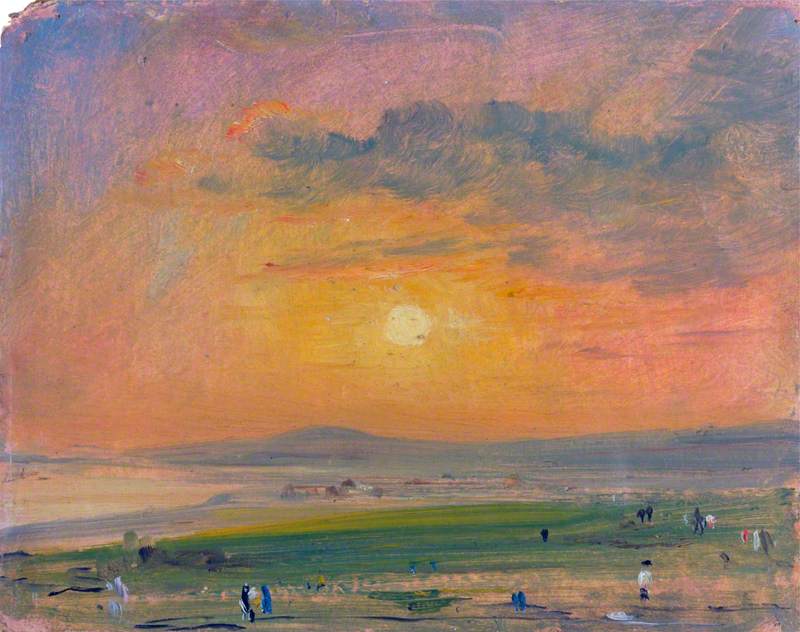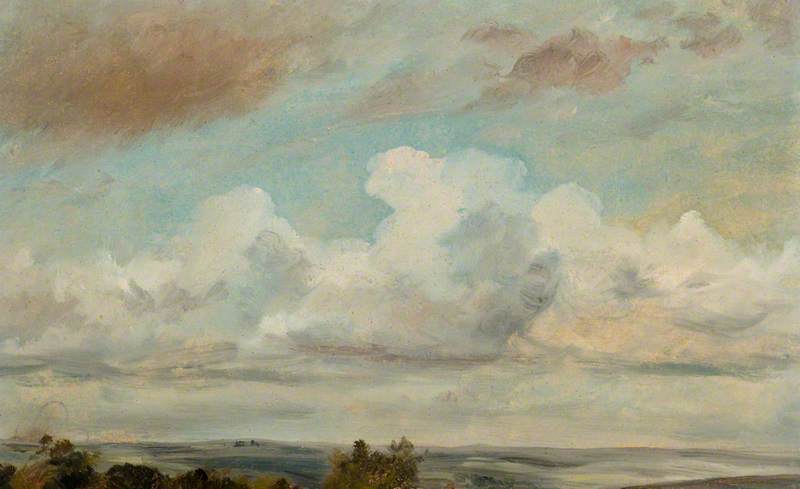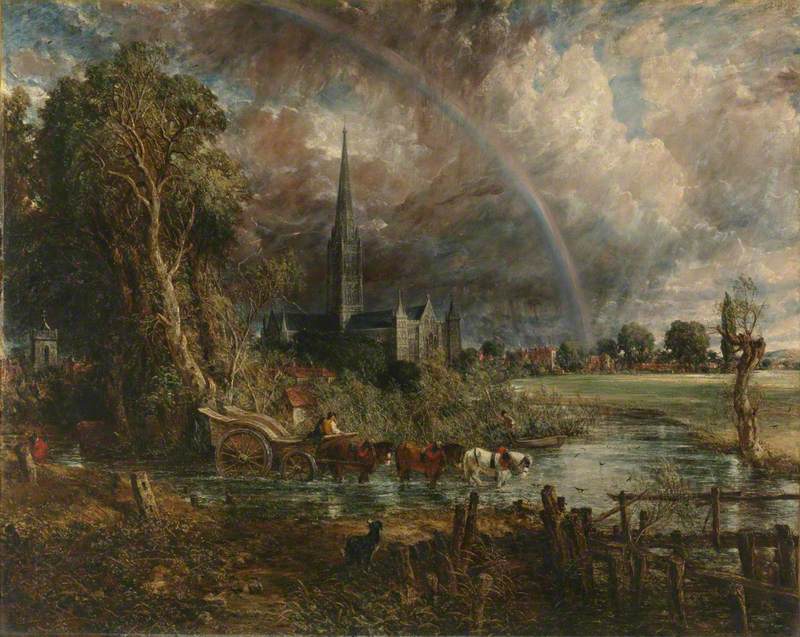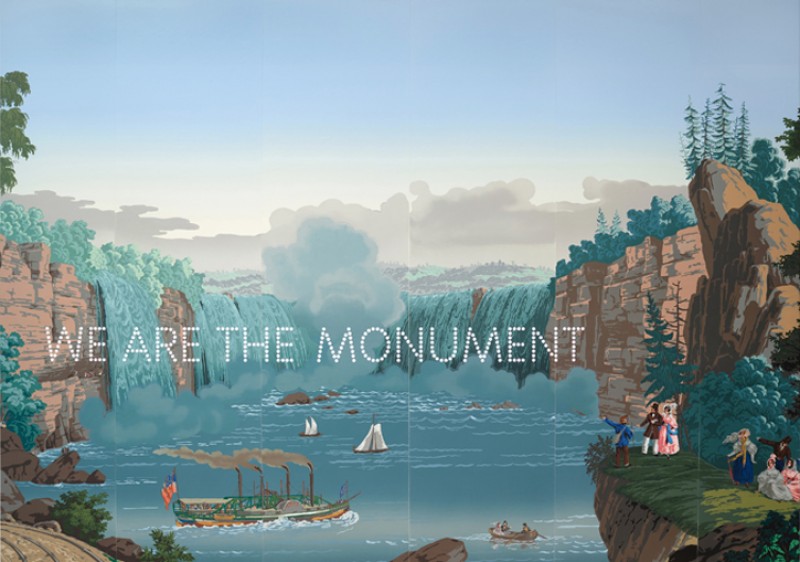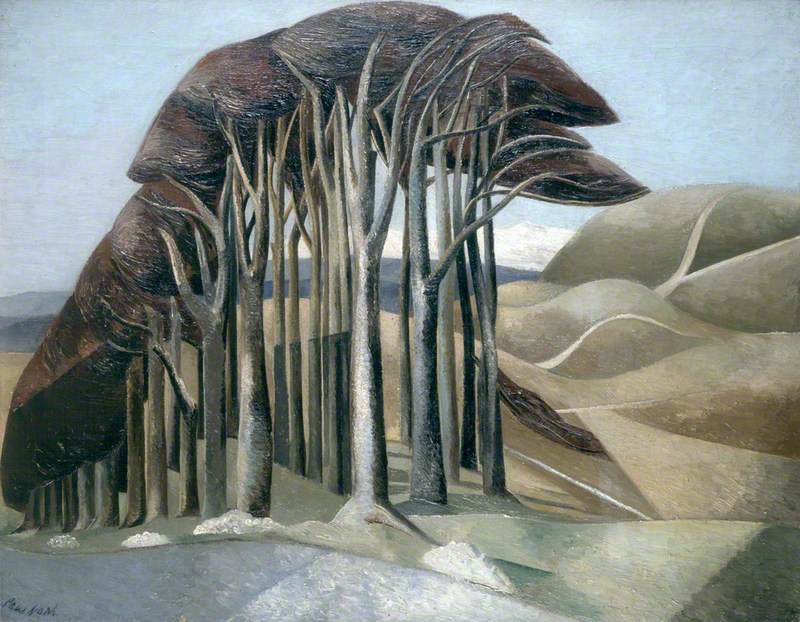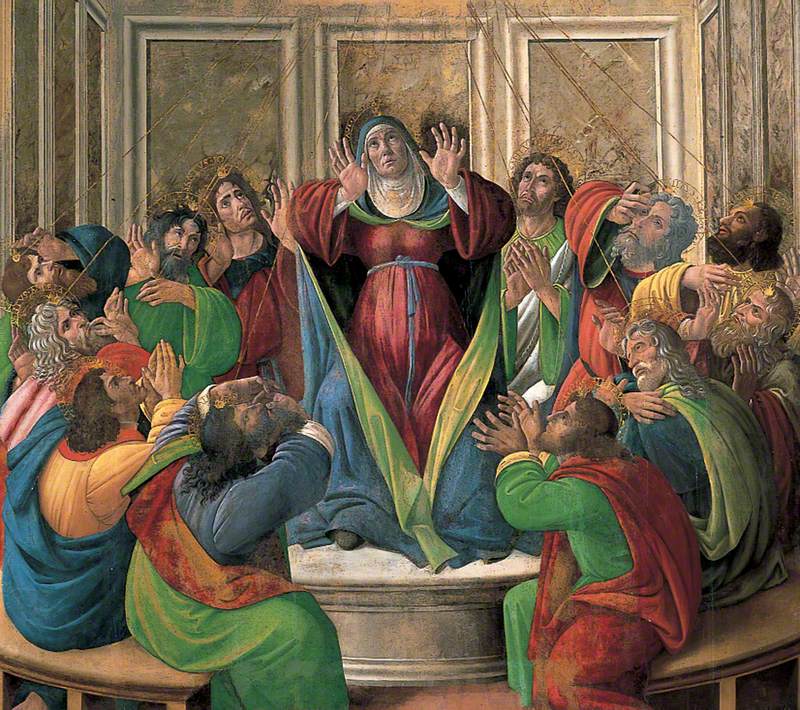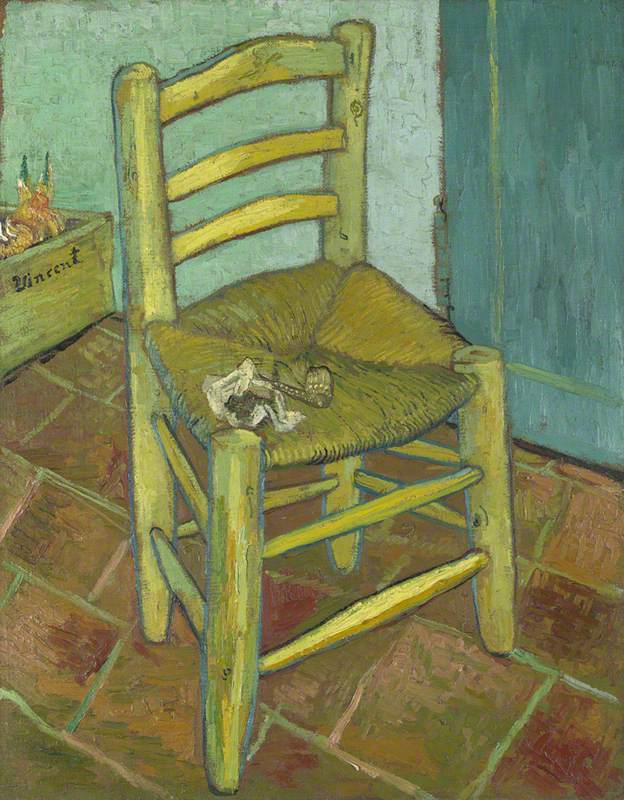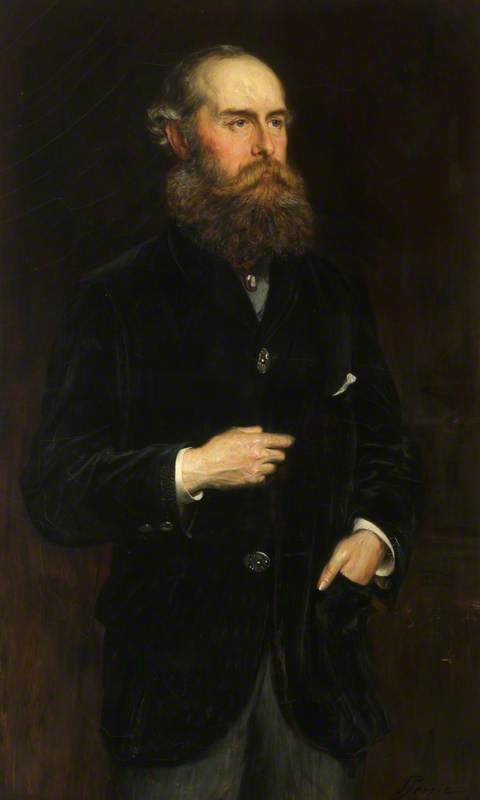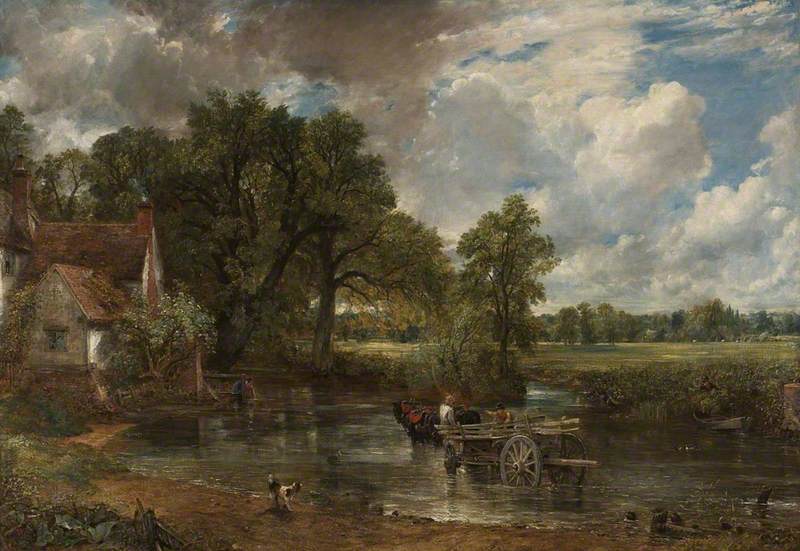
(Born East Bergholt, Suffolk, 11 June 1776; died Hampstead, Middlesex [now in London], 31 March/1 April 1837). English painter, ranked with his contemporary Turner as one of the two greatest figures in the history of British landscape painting. Both of them brought a new freedom and inventiveness to their subject and they had a good deal of mutual respect. However, their temperaments and goals differed greatly and their careers were strongly contrasting. Whereas Turner was precocious and soon achieved critical and financial success, Constable was slow to mature and had difficulty in making a name in England (he was more appreciated in France). He was the son of a prosperous corn merchant, and was trained for a career in the family business.
Constable's early work was strongly influenced by Gainsborough (likewise a native of Suffolk) and by 17th-century Dutch landscape painting (he revered Ruisdael in particular). However, he developed a highly personal approach by trying to communicate the feelings he felt in front of nature, conveying a sense—in his own words—of ‘light, dews, breezes, bloom’. Just as his contemporary William Wordsworth rejected what he called the ‘poetic diction’ of his predecessors, so Constable turned away from the pictorial conventions of 18th-century landscape painters, who, he said, were always ‘running after pictures and seeking the truth at second hand’. He thought that ‘No two days are alike, nor even two hours; neither were there ever two leaves of a tree alike since the creation of the world.’ In contrast to the much-travelled Turner, he never went abroad, and his finest works are of the places he knew and loved best, particularly Suffolk and Hampstead (at this time a village north of London), where he lived from 1821. To render the changing effects of light and weather he abandoned traditional ideals of smooth finish, using rough, vigorous brushwork to suggest the sparkle of sunlight, the movement of clouds across the sky, or the drama of storms. To many contemporaries his work looked unfinished, but Henry Fuseli was among those who applauded the freshness of his approach: C. R. Leslie records him as saying, ‘I like de landscapes of Constable; he is always picturesque, of a fine colour, and de lights always in de right places; but he makes me call for my greatcoat and umbrella.’
Constable worked extensively in the open air, sketching in oils, but his finished pictures were produced in the studio. For his most ambitious works—‘six-footers’ as he called them—he followed the unusual technical procedure of making a full-size oil sketch, and recently there has been a tendency to praise these even more highly than the finished works because of their boldness and freedom of brushwork. (The full-size sketch for The Hay Wain is in the V&A, London, which has the largest collection of Constable's work.) In England Constable had no real successor and the many imitators (who included his son Lionel, 1825–87) turned rather to the formal compositions than to the more direct sketches. In France, however, he was a major influence on Romantic painters such as Delacroix and on the members of the Barbizon School.
Text source: The Oxford Dictionary of Art and Artists (Oxford University Press)
